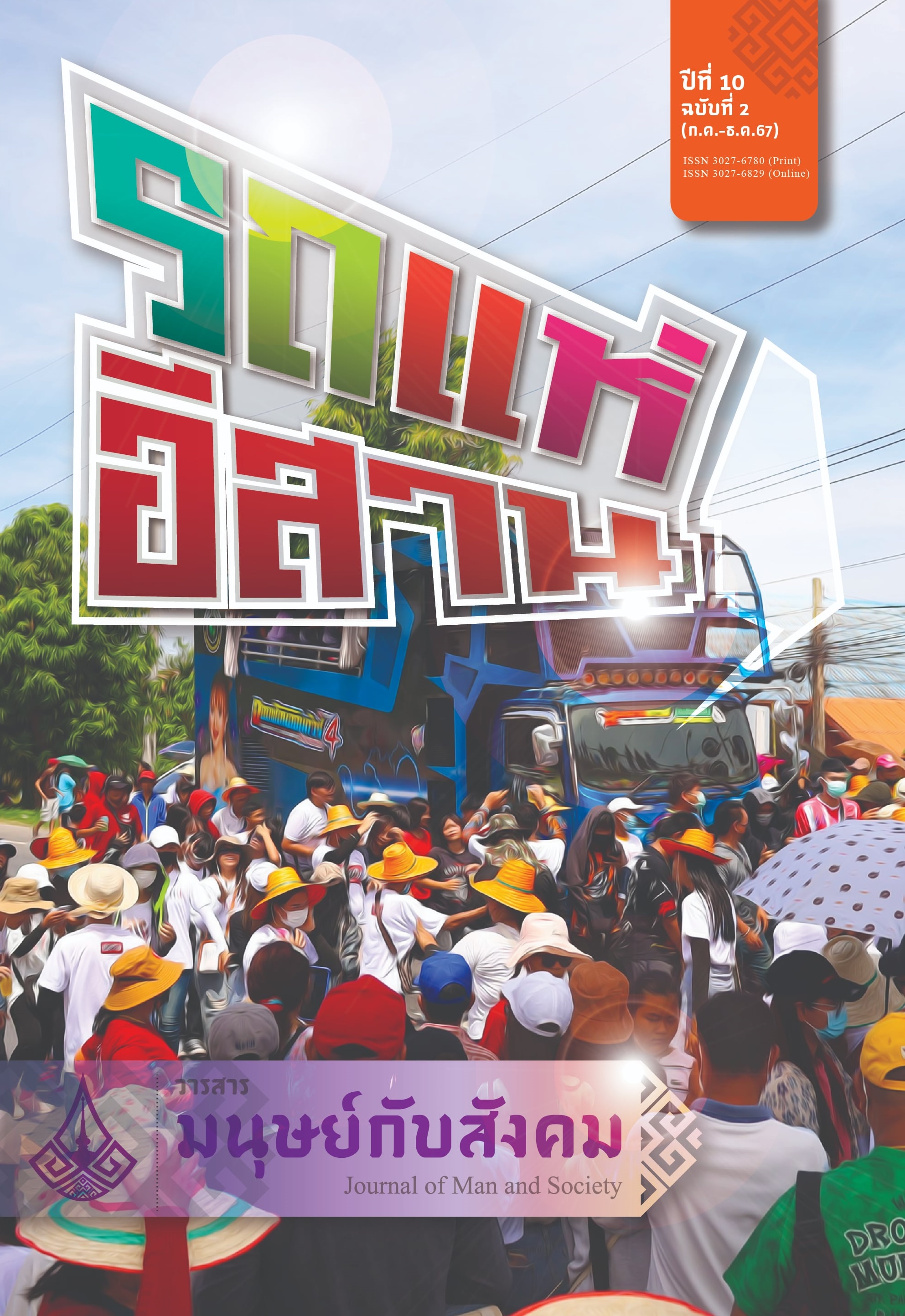Factors Influencing Undergraduate Students’ Use of Emojis in Facebook Messenger Communication
Main Article Content
Abstract
This study explores the factors influencing undergraduate students’ use of emojis in Facebook Messenger communication through a mixed-methods approach, incorporating quantitative data collected through Google Forms surveys (Discourse Completion Task or DCT) and qualitative insights from semi-structured interviews, open-ended questions, and real chat data. Data were collected from 143 students using Google Forms, with semi-structured interviews, open-ended questions, and real chat data analysis involving 5% (10 participants) of the sample. The findings revealed a preference for combining text and emojis to enhance clarity, emotional expression, and engagement. Key themes included the role of emojis. Common themes included expression of emotions, enhancement of communication, convenience or time-saving, fun or engagement, formality or appropriateness, and ambiguity or misinterpretation. Challenges such as potential misinterpretation and the need for careful use in formal settings are discussed. Using Multimodal Discourse Analysis, this study highlights emojis’ significant impact on the tone and mood of interactions, contributing to a deeper understanding of digital communication among Thai undergraduate students.
Article Details

This work is licensed under a Creative Commons Attribution-NonCommercial-NoDerivatives 4.0 International License.
เนื้อหาและข้อมูลที่ตีพิมพ์ลงในวารสารมนุษย์กับสังคม ถือเป็นข้อคิดเห็นและความรับผิดชอบโดยตรงของผู้เขียนซึ่งกองบรรณาธิการวารสารไม่จำเป็นต้องเห็นด้วยหรือร่วมรับผิดชอบใดๆ
บทความ ข้อมูล เนื้อหา รูปภาพ ฯลฯ ที่ได้รับการตีพิมพ์ในวารสารมนุษย์กับสังคม ถือเป็นลิขสิทธิ์ของวารสาร หากบุคคลหรือหน่วยงานใดต้องการนำทั้งหมดหรือส่วนหนึ่งส่วนใดไปเผยแพร่ต่อต้องอ้างอิงวาสาร
References
Algharabali, N. A., & Taqi, H. A. (2018). Taming the sting: The use of evaluative emojis by college students in Kuwait. International journal of linguistics and communication, 6(1), 46-60.
Alshboul, N., & Rababah, L. (2021). The emoji linguistic functions on Facebook interactions among undergraduate students at Jadara University in Jordan. Journal for the Study of English Linguistics, 9(1), 43-54.
Alshenqeeti, H. (2016). Are emojis creating a new or old visual language for new generations? A socio-semiotic study. Advances in Language and Literary Studies, 7(6), 56-69. https://doi.org/10.7575/aiac.alls.v.7n.6p.56
Cheung, C. M., Chiu, P. Y., & Lee, M. K. (2011). Online social networks: Why do students use facebook?. Computers in human behavior, 27(4), 1337-1343.
Cramer, H., De Juan, P., & Tetreault, J. (2016, September). Sender-intended functions of emojis in US messaging. Proceedings of the 18th International Conference on Human-Computer Interaction with Mobile Devices and Services (pp. 504–509).
Braun, V., & Clarke, V. (2006). Using thematic analysis in psychology. Qualitative research in psychology, 3(2), 77-101.
Creswell, J. W., & Poth, C. N. (2016). Qualitative inquiry and research design: Choosing among five approaches. Sage publications.
Degenhard, J. (2023, n.d.). Number of Facebook users in Thailand from 2017 to 2022 with a forecast through 2026 (in millions). Statista. https://www.statista.com/statistics/490467/number-of-thailand-facebook-users/
Guest, G., Bunce, A., & Johnson, L. (2006). How many interviews are enough? An experiment with data saturation and variability. Field methods, 18(1), 59-82.
Kaye, L. K., Malone, S. A., & Wall, H. J. (2017). Emojis: Insights, affordances, and possibilities for psychological science. Trends in Cognitive Sciences, 21(2), 66-68.
Kress, G., & Van Leeuwen, T. (2002). Colour as a semiotic mode: notes for a grammar of colour. Visual communication, 1(3), 343-368.
Kress, G. (2012). Multimodal discourse analysis. In J. P. Gee & M. Handford (Eds.), The Routledge handbook of discourse analysis (pp. 35-49). Routledge.
Madden, M., Lenhart, A., Cortesi, S., Gasser, U., Duggan, M., Smith, A., and Beaton, M. (2013). “Teens, Social Media, and Privacy.” Pew Research Center 21, (1055), 2-86.
Mason, M. (2010). Sample size and saturation in PhD studies using qualitative interviews. Forum qualitative Sozialforschung/Forum: qualitative social research, 11(3). https://doi.org/10.17169/fqs-11.3.1428
Miles, M. B., Huberman, A. M., & Saldaña, J. (2014). Qualitative data analysis: A methods sourcebook (3rd ed.). Sage Publications.
Sacks, H., Schegloff, E. A., & Jefferson, G. (1974). A simplest systematics for the organization of turn-taking for conversation. language, 50(4), 696-735.
Seargeant, P. (2019). The Emoji Revolution: How technology is shaping the future of communication. Cambridge University Press.
Tian, Y., Galery, T., Dulcinati, G., Molimpakis, E., & Sun, C. (2017, April). Facebook sentiment: Reactions and emojis. In Proceedings of the fifth international workshop on natural language processing for social media (pp. 11–16).

